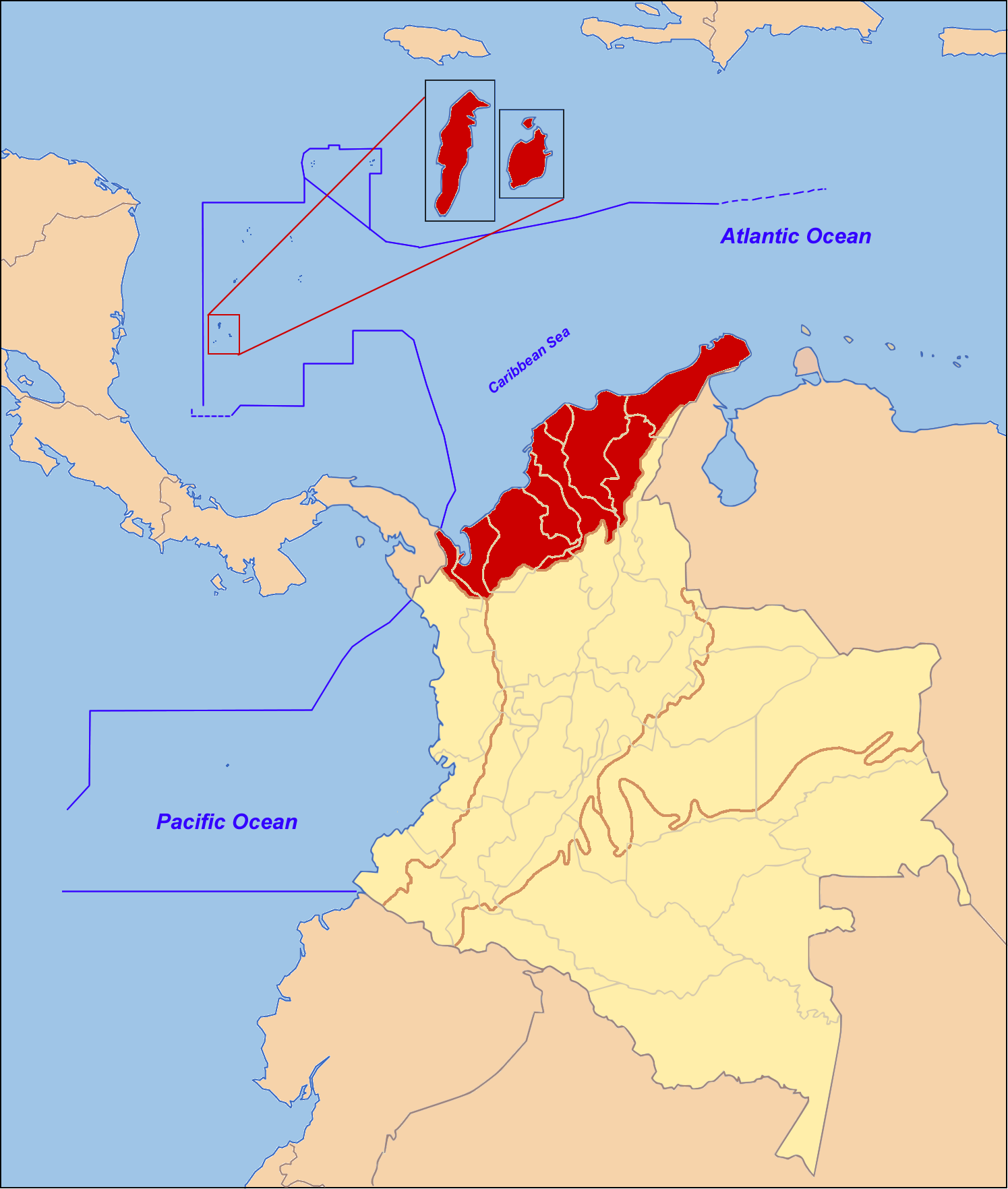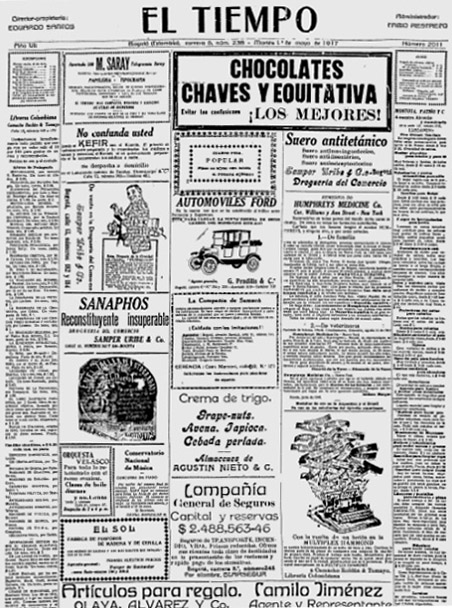|
Montería
Montería () is a municipality and city located in northern Colombia and is the capital of the Departments of Colombia, Department of Córdoba Department, Córdoba. The city is located away from the Caribbean sea, by the Sinú River. The city and region are known for their distinct cultural heritages, which include a blend of mainly colonial Spanish people, Spanish descendants, indigenous Zenú, Zenú peoples and more recently, Middle East immigrants. The city is home to the Sombrero Vueltiao, a national symbol; and is the home of Porro folklore music. The city has an inland seaport connected to the Caribbean Sea by the Sinú River. History The area where the Department of Córdoba is located today was first settled by Zenú, Zenú Indians, who lived near the banks of three rivers: the Sinú River, Sinú (Finzenú), the San Jorge River, San Jorge (Panzenú) and the Nechi River, Nechí (Zenúfana). Montería was founded on May 1, 1777 by Spanish officer Antonio de la Torre y Mir ... [...More Info...] [...Related Items...] OR: [Wikipedia] [Google] [Baidu] |
Los Garzones Airport
Los Garzones International Airport ( es, Aeropuerto Internacional Los Garzones, ) is an international airport serving the city of Montería in the Córdoba Department of Colombia. It is the only airport in the department that can handle modern jets (up to Airbus A330 size). On normal days, the airport receives 25 to 30 takeoffs and landings. It is one of the busiest airports in Colombia in terms of passenger flow. In 2008, the consortium "AirPlan", formed by the following companies, was awarded a bidding process: Malibú S.A .; Fernando Mazuera y Cía., Information and Technology S.A., Portales Urbanos S.A., Colombian Society of Commercial Investments (Socinsa), Superstores and Olympic Drugstores, Noarco S.A. and Integral Services for Networks and Communications that, together with the Chinese company CAH Colombia, propose works among which are the construction of a new terminal, reconditioning of the runways and taxiways and new security systems. Since 2010, the airport has an u ... [...More Info...] [...Related Items...] OR: [Wikipedia] [Google] [Baidu] |
Sinú River
Sinú River (), is a river in northwestern Colombia that flows mostly through the Córdoba Department and into the Caribbean. The river is the third most important river after the Magdalena River and the Cauca River in the Caribbean Region. It is born in the Antioquia Department, flowing south to north for until flowing into the Caribbean Sea. The river is navigable for only half of its length, starting in Montería, the largest city in its basin. Also, this river is the main tourist attraction of Montería decorated with the first avenue when it passes by Montería. Ecology The river flows through the Sinú Valley dry forests ecoregion. In general, the aquatic fauna shows connections with the Magdalena–Cauca River basin, but also the Atrato River basin. There has been extensive habitat destruction in the region, causing problems to many species in the area. Two parrots that are endemic to the river valley, the Sinú brown-throated parakeet (''Aratinga pertinax griseipect ... [...More Info...] [...Related Items...] OR: [Wikipedia] [Google] [Baidu] |
Caribbean Region (Colombia)
The Caribbean region of Colombia or Caribbean coast region is in the north of Colombia and is mainly composed of 8 departments located contiguous to the Caribbean. MEMO: Natural Regions of Colombia Memo.com.co Accessed 22 August 2007. The area covers a total land area of , including the in the and corresponding to approximately 1/10 of the total territory of Colombia. The Caribbean region of Colom ... [...More Info...] [...Related Items...] OR: [Wikipedia] [Google] [Baidu] |
Caribbean Region
The Caribbean region of Colombia or Caribbean coast region is in the north of Colombia and is mainly composed of 8 departments located contiguous to the Caribbean. MEMO: Natural Regions of Colombia Memo.com.co Accessed 22 August 2007. The area covers a total land area of , including the in the and corresponding to approximately 1/10 of the total territory of Colombia. The Caribbean region of Colomb ... [...More Info...] [...Related Items...] OR: [Wikipedia] [Google] [Baidu] |
University Of Córdoba (Colombia)
The University of Córdoba (UNICORDOBA, sometimes referred to colloquially UNICOR), is a public, departmental, coeducational, research university based in the city of Montería, Córdoba, Colombia. It was founded in 1974 by Elías Bechara Zainúm See also * List of universities in Colombia This is a list of universities in Colombia. The Colombian higher education system is composed of technical institutes focused on vocational education, university institutions focused on technological education, and universities focused on und ... Notes External links University of Cordobaofficial site Universities and colleges in Colombia Educational institutions established in 1962 {{Colombia-university-stub ... [...More Info...] [...Related Items...] OR: [Wikipedia] [Google] [Baidu] |
Colombia
Colombia (, ; ), officially the Republic of Colombia, is a country in South America with insular regions in North America—near Nicaragua's Caribbean coast—as well as in the Pacific Ocean. The Colombian mainland is bordered by the Caribbean Sea to the north, Venezuela to the east and northeast, Brazil to the southeast, Ecuador and Peru to the south and southwest, the Pacific Ocean to the west, and Panama to the northwest. Colombia is divided into 32 departments and the Capital District of Bogotá, the country's largest city. It covers an area of 1,141,748 square kilometers (440,831 sq mi), and has a population of 52 million. Colombia's cultural heritage—including language, religion, cuisine, and art—reflects its history as a Spanish colony, fusing cultural elements brought by immigration from Europe and the Middle East, with those brought by enslaved Africans, as well as with those of the various Amerindian civilizations that predate colonization. Spanish is th ... [...More Info...] [...Related Items...] OR: [Wikipedia] [Google] [Baidu] |
Juan De Torrezar Díaz Pimienta
Juan de Torrezar Díaz Pimienta (sometimes ''Juan de Torrezal Díaz Pimienta'') (died 11 June 1782 in Bogotá) was a Spanish military officer and colonial official. He was twice governor of Cartagena de Indias, after which he was promoted to viceroy of New Granada. Background He was a brigadier in the royal army and a knight of the Order of Carlos III. In 1779 he was promoted to field marshal. He was governor of the province of Cartagena two times. The first time was from 12 May 1774 to 14 September 1780, the second was from 1 May 1781 to 21 April 1782. During his government, Lieutenant Antonio de Latorre founded 43 pueblos, in which 41,000 persons were settled. One of these was Montería. As viceroy of New Granada He took possession of his new office on 1 April 1782, still in Cartagena. Before leaving that city, he announced a generous amnesty for those charged in the Revolt of the Comuneros. On 21 April he left Cartagena to take up his new position in Santafé de Bogotá, th ... [...More Info...] [...Related Items...] OR: [Wikipedia] [Google] [Baidu] |
Córdoba Department
Córdoba most commonly refers to: * Córdoba, Spain, a major city in southern Spain and formerly the imperial capital of Islamic Spain * Córdoba, Argentina, 2nd largest city in the country and capital of Córdoba Province Córdoba or Cordoba may also refer to: Places Argentina * Córdoba Province, Argentina Colombia * Córdoba Department * Córdoba, Quindío * Córdoba, Bolívar * Córdoba, Nariño * Córdoba (wetland), a wetland of Bogota Mexico * Córdoba, Veracruz Spain * Province of Córdoba (Spain), of which Córdoba is the capital of ** Córdoba (Spanish Congress electoral district), the electoral district representing the province * Córdoba (Vino de la Tierra), a wine-producing region in Spain *Kingdom of Córdoba, historical territorial jurisdiction of the Crown of Castile Historical Islamic states * Emirate of Córdoba, 756–929 * Caliphate of Córdoba, 929–1031 * Taifa of Córdoba, 11th century Venezuela * Córdoba Municipality, Táchira, a municipalit ... [...More Info...] [...Related Items...] OR: [Wikipedia] [Google] [Baidu] |
Departments Of Colombia
Colombia is a unitary state, unitary republic made up of thirty-two departments (Spanish language, Spanish: ''departamentos'', sing. ''departamento'') and a Capital District (''Capital districts and territories, Distrito Capital''). Each department has a governor (''gobernador'') and an Assembly (''Asamblea Departamental''), elected by popular vote for a four-year period. The governor cannot be re-elected in consecutive periods. Departments are administrative division, country subdivisions and are granted a certain degree of autonomy. Departments are formed by a grouping of municipalities of Colombia, municipalities (''municipios'', sing. ''municipio''). Municipal government is headed by mayor (''alcalde'') and administered by a municipal council (''concejo municipal''), both of which are elected for four-year periods. Some departments have subdivisions above the level of municipalities, commonly known as provinces of Colombia, provinces. Chart of departments Each one of th ... [...More Info...] [...Related Items...] OR: [Wikipedia] [Google] [Baidu] |
El Tiempo (Colombia)
''El Tiempo'' ( en, "Time" or "The Times") is a nationally distributed broadsheet daily newspaper in Colombia launched on January 30th, 1911. , ''El Tiempo'' had the highest circulation in Colombia with an average daily weekday of 1,137,483 readers, rising to 1,921,571 readers for the Sunday edition. From 1913 to 2007, ''El Tiempos main shareholders were members of the Santos Calderón family. Several also participated in Colombian politics: Eduardo Santos Montejo was President of Colombia from 1938 to 1942. Francisco Santos Calderón served as Vice-President (2002–2010). And Juan Manuel Santos as Defense Minister (2006–2009) during Álvaro Uribe's administration; Juan Manuel was elected president of Colombia in 2010 and served in that position until 2018. In 2007, Spanish Grupo Planeta acquired 55% of the ''Casa Editorial El Tiempo'' media group, including the newspaper and its associated TV channel Citytv Bogotá. In 2012, businessman Luis Carlos Sarmiento Angulo bought th ... [...More Info...] [...Related Items...] OR: [Wikipedia] [Google] [Baidu] |
El Heraldo De Barranquilla
''El Heraldo'' ( en, The Herald) is a regional newspaper based in the city of Barranquilla, Colombia, founded in 1933 by Juan Fernández Ortega, Luis Eduardo Manotas Llinás, and Alberto Pumarejo Vengoechea. It is the third highest circulating newspaper in Colombia mostly covering the area of the Colombian Caribbean Region and other main cities in the country. References Publications established in 1933 Newspapers published in Colombia Mass media in Barranquilla Spanish-language newspapers {{Colombia-newspaper-stub ... [...More Info...] [...Related Items...] OR: [Wikipedia] [Google] [Baidu] |
Cartagena, Colombia
Cartagena ( , also ), known since the colonial era as Cartagena de Indias (), is a city and one of the major ports on the northern coast of Colombia in the Caribbean Coast Region, bordering the Caribbean sea. Cartagena's past role as a link in the route to West Indies provides it with important historical value for world exploration and preservation of heritage from the great commercial maritime routes. As a former Spanish colony, it was a key port for the export of Bolivian silver to Spain and for the import of enslaved Africans under the asiento system. It was defensible against pirate attacks in the Caribbean. The city's strategic location between the Magdalena and Sinú Rivers also gave it easy access to the interior of New Granada and made it a main port for trade between Spain and its overseas empire, establishing its importance by the early 1540s. Modern Cartagena is the capital of the Bolívar Department, and had a population of 1,028,736, according to the 2018 ce ... [...More Info...] [...Related Items...] OR: [Wikipedia] [Google] [Baidu] |


